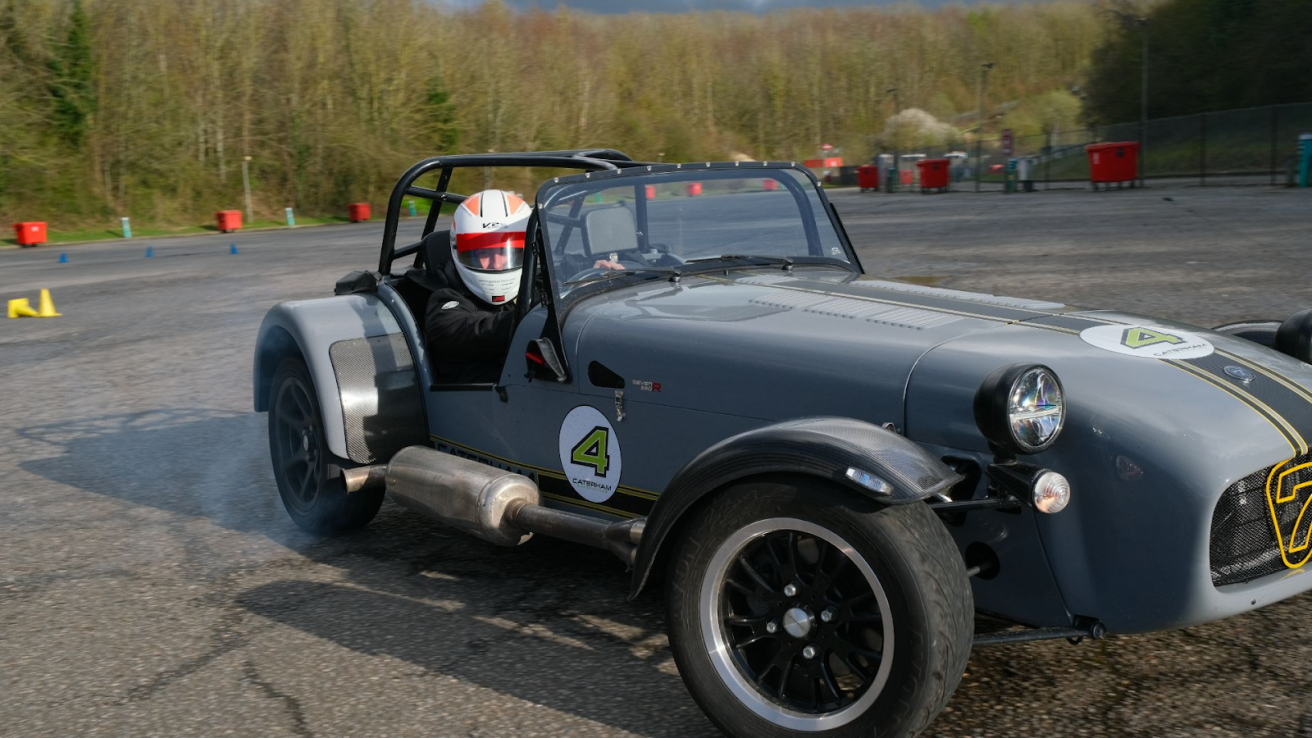Drifting for beginners: we go sideways in a Caterham Seven
What’s the most fun you can have at 20mph? I’ll give you a clue: it isn’t stop-starting across most of south London on a Tuesday morning. Thankfully, things are about to get considerably more exciting. The venue is Brands Hatch, the car is a Caterham Seven and today’s ‘work’ involves skids, spins and generally going sideways. [...]


What’s the most fun you can have at 20mph? I’ll give you a clue: it isn’t stop-starting across most of south London on a Tuesday morning. Thankfully, things are about to get considerably more exciting. The venue is Brands Hatch, the car is a Caterham Seven and today’s ‘work’ involves skids, spins and generally going sideways.
By the time we finish, I’ll have improved my car control, steamed up my crash helmet from laughing and massacred many unsuspecting plastic cones. All at less than 20mph.
Story of the Caterham Seven
If you want a raw, unfiltered driving experience, nothing beats a Caterham Seven. First conceived as the Lotus Seven in 1957, this open-wheeled roadster embodied Colin Chapman’s much-quoted mantra of “Simplify, then add lightness”.
Caterham Cars bought the rights to the Seven in 1973 and has assembled it ever since – originally in my home town of Caterham, Surrey, and now in nearby Dartford, Kent. The Seven has grown more powerful and (slightly) more comfortable over the years, but the basic recipe hasn’t changed.
The current range stretches from the three-cylinder 85hp Seven 170 to the supercar-baiting 310hp 620R. Today, I’ll be driving the mid-range Seven 360R, powered by a 180hp Ford Duratec engine with a five-speed manual gearbox driving the rear wheels: good for 0-62mph in 4.8 seconds and 130mph. Track-focused ‘R’ specification adds a limited-slip differential, composite race seats, a beefier brake master cylinder and a lightweight flywheel.
Force and finesse
I arrive at Brands Hatch, grab a coffee, then join my fellow journalists for a driver briefing. After a few stern safety warnings, motorsport presenter Samantha Parker, who will race a Seven in the Caterham Academy this year, talks me through the technique.
Drifting requires a combination of force and finesse: a sharp right-foot jab to unsettle the car’s rear end and get it sliding, then delicate throttle and steering inputs to keep it from straightening up (understeer) or spinning out (excessive oversteer).
To help these Sevens drift, they feature harder compound tyres and slightly jacked-up rear suspension. Each one also has a substantial roll cage, as fitted to the Caterham race cars, which removes the option to fit a roof. “What happens if it rains?” I ask naively. “You’ll get wet,” says Sam.
Strapped in and ready
The clouds are dark and ominous as we head outside. The drift experience doesn’t actually take place on Brands Hatch circuit, but in the huge parking area next to Hailwoods cafe. As Sam and her team lay out some sacrificial cones, I clamber aboard a Seven and get strapped in.



